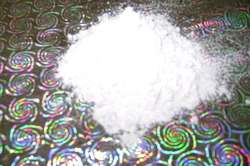| Salient Features : |
- Premixed light weight Plaster.
- Easy Workability : Easy to mix - Easy to Apply.
- Less water consumption – 15 liter water required for 25 kg plaster. Water curing is not required.
- Free from inherent shrinkage cracks.
- Classified as non combustible (BS:476 part 4:1970)
- Low Thermal conductivity – (Thermal Resistance R = 0.07 m2 k/w, 13mm thickness)
- Low Density
- Light Weight – Better strength to weight ratio as compared to density.
- Achieves total strength within 48 hours on complete drying (Quick drying)
- Better sound ab sorption.
|
| |
| Basic Important Facts : |
The consumption of Gypsum Plaster is directly related to the line & level of the walls in the building, which is a variable factor. It also depends upon the basic wall base material i.e. Bricks/Blocks.
Based on field trials & experience, the consumption pattern of Gypsum Plaster varies between 1.5 kg. in a right angle finish on the walls.
It is advisable to do a mock up of a entire flat in your building to ascertain the actual consumption pattern of Gypsum Plaster. |
| |
| Guidelines For Application : |
- Fittings & plugging should be done before plastering. Openings, chasing etc. (for fittings or conduits ) should be filled firmly before starting plastering.
- Entire background (to be plastered) should be thoroughly brushed & cleaned to remove dust, loose mortar & oil/grease.
- The surface should be reasonably dry & protected from weather conditions. The height suction background should be adjusted by sprinkling water.
- Always mix powder, not water to powder. Material should be thoroughly mixed & stirred as to insure it is free from lumps and impurities before use.
- Once plaster wet mix is made & has started to do set, it should not be tempered with fresh mix or powder, as it will affect the properties.
- Due care should be taken to ensure that rapid loss of water is avoided, in not & dry condition.
- Tools & Water used should be cleaned & free from impurities.
- To ensure that hands are dry before always fold open end of bag, to protect plaster from moisture.
- Bags should be handled carefully to avoid tearing. Hooks are not recommended.
|
![]() : +91 97695 77838
: +91 97695 77838


